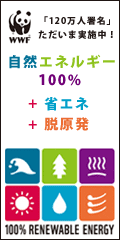4月5日(April 5)農業の恵み(Bounty of agriculture )
二つ有る 農の恵みは 何なりや 食べ物の奥に 自然環境
Two bounties come from agriculture, What are they? Behind food, Natural environment
農業者は食物を育てるが、土壌を肥沃にしようとしている。みみず、昆虫、微生物などの生物が肥沃で持続可能な土を作って
くれる。その為には、有機農法、最低年3回の畦の草刈、田圃の水の日毎の細やかな調整、といった複雑、煩瑣な仕事が必要だ。これによって今までの日本の自然環境が守られてきた。効率だけを追求する農業では自然環境も土壌も破壊され荒廃していくであろう。上述の持続可能な農業によって維持される特徴的な生物や草類には以下のようなものがある。
Indeed farmers produce food, but actually they try to make soils fertile. Earth worms, insects, microbes makes soil fertile and sustainable.
For that purpose complicated and troublesome works like arganic farming method, at-least-3-times levee-grass cutting, everyday-minute-control of water supply to each paddy field, etc.,are required. By such works farmers have been preserving the natural environment of the countryside.
If they seek only efficiency of today in farming, the natural environment and the soil will be destroyed and ruined. Typical creatures and grasses maintained by the above-mentioned suatainable farming method are as follows:
生物(Creature) :オタマジャクシ(Tadpole)、多種類の蛙(Many kinds of frogs)、ユスリ蚊(Midge)、
ミミズ(Earth worm)、エビ(Shrimp)、アメンボ(Water strider)、ヤゴ(Dragonfly nimph)、ウンカ(Leafhopper)、
トンボ(Dragonfly)、糸トンボ(Damselfly)、多種類ノクモ(Many kinds of spiders)、トビ虫(Springtail)、
川ニナ(Marsh snail)、メダカ(Oryzias latipes latipes)、鮒(Roach)、多種類の亀(Many kinds of tortoises)、
白鷺(Greater,Intermediate, Little egret)、カイツブリ(Grebe)、燕(Swallow)
草 (Grass) :アザミ(Thistle)、スミレ(Violet)、蓬(Mugwort)、ヨメナ(Starwort)、
ツリガネニンジン(Adenophora triphylla var. japonica)、スイバ(Sour sorrel)、タンポポ(Dandelion)、
ミソハギ(Purple loosestrife)、キキョウ(Balloonflower)、オミナエシ(Patrinia Scabiosaefolia)、
ワレモコウ(Burnet)、ドクダミ(Houttuynia cordata)、ゲンノショウコ(Cranesbill)
これらの中には最近めっきり数が減っているものが多い。上記の対策が充分でないからだ。EUはこのことに気付き、15年位前から方向修正してきて食料自給率も現在80%近辺に上げてきた。日本も見習うべきである。
Among the above creatures and grasses many are decreasing fast in number due to the increasing degree of efficiency-oriented farming method.
EU was aware of this fact about 15 years ago, and changed its farming method. And now it recovered its food self-sufficient rate up to about 80%. Japan should follow suit.
以上は宇根豊氏の考えに共鳴し、農業を知るものとして、彼の運動を支えるべく纏めたものです。興味のある方は、氏の関連の記事Internetで参照して下さい。同氏は多くの著書を出していらっしゃいます。
I summarized the thought of Mr. Uno,Yutaka about agriculture as above, to support his innovative movement as a person who knows agriculture because I sympathize with his thought.For more detail please refer to his related articles on Internet. He issues many books.
完(The end)
二つ有る 農の恵みは 何なりや 食べ物の奥に 自然環境
Two bounties come from agriculture, What are they? Behind food, Natural environment
農業者は食物を育てるが、土壌を肥沃にしようとしている。みみず、昆虫、微生物などの生物が肥沃で持続可能な土を作って
くれる。その為には、有機農法、最低年3回の畦の草刈、田圃の水の日毎の細やかな調整、といった複雑、煩瑣な仕事が必要だ。これによって今までの日本の自然環境が守られてきた。効率だけを追求する農業では自然環境も土壌も破壊され荒廃していくであろう。上述の持続可能な農業によって維持される特徴的な生物や草類には以下のようなものがある。
Indeed farmers produce food, but actually they try to make soils fertile. Earth worms, insects, microbes makes soil fertile and sustainable.
For that purpose complicated and troublesome works like arganic farming method, at-least-3-times levee-grass cutting, everyday-minute-control of water supply to each paddy field, etc.,are required. By such works farmers have been preserving the natural environment of the countryside.
If they seek only efficiency of today in farming, the natural environment and the soil will be destroyed and ruined. Typical creatures and grasses maintained by the above-mentioned suatainable farming method are as follows:
生物(Creature) :オタマジャクシ(Tadpole)、多種類の蛙(Many kinds of frogs)、ユスリ蚊(Midge)、
ミミズ(Earth worm)、エビ(Shrimp)、アメンボ(Water strider)、ヤゴ(Dragonfly nimph)、ウンカ(Leafhopper)、
トンボ(Dragonfly)、糸トンボ(Damselfly)、多種類ノクモ(Many kinds of spiders)、トビ虫(Springtail)、
川ニナ(Marsh snail)、メダカ(Oryzias latipes latipes)、鮒(Roach)、多種類の亀(Many kinds of tortoises)、
白鷺(Greater,Intermediate, Little egret)、カイツブリ(Grebe)、燕(Swallow)
草 (Grass) :アザミ(Thistle)、スミレ(Violet)、蓬(Mugwort)、ヨメナ(Starwort)、
ツリガネニンジン(Adenophora triphylla var. japonica)、スイバ(Sour sorrel)、タンポポ(Dandelion)、
ミソハギ(Purple loosestrife)、キキョウ(Balloonflower)、オミナエシ(Patrinia Scabiosaefolia)、
ワレモコウ(Burnet)、ドクダミ(Houttuynia cordata)、ゲンノショウコ(Cranesbill)
これらの中には最近めっきり数が減っているものが多い。上記の対策が充分でないからだ。EUはこのことに気付き、15年位前から方向修正してきて食料自給率も現在80%近辺に上げてきた。日本も見習うべきである。
Among the above creatures and grasses many are decreasing fast in number due to the increasing degree of efficiency-oriented farming method.
EU was aware of this fact about 15 years ago, and changed its farming method. And now it recovered its food self-sufficient rate up to about 80%. Japan should follow suit.
以上は宇根豊氏の考えに共鳴し、農業を知るものとして、彼の運動を支えるべく纏めたものです。興味のある方は、氏の関連の記事Internetで参照して下さい。同氏は多くの著書を出していらっしゃいます。
I summarized the thought of Mr. Uno,Yutaka about agriculture as above, to support his innovative movement as a person who knows agriculture because I sympathize with his thought.For more detail please refer to his related articles on Internet. He issues many books.
完(The end)















